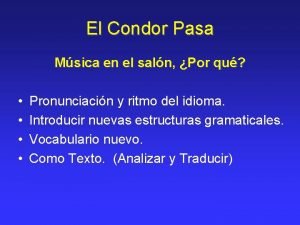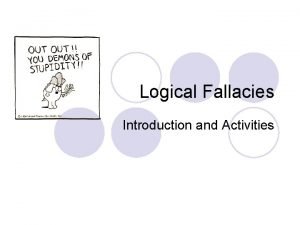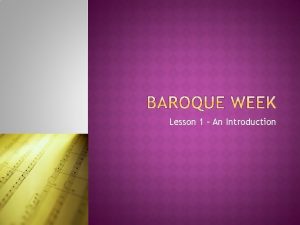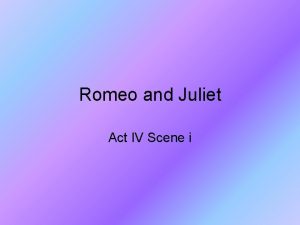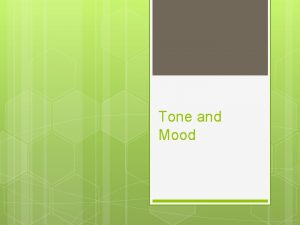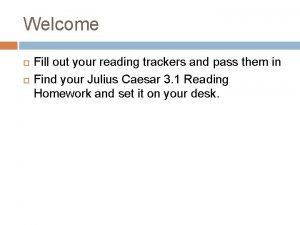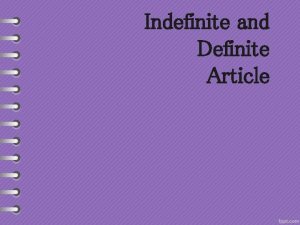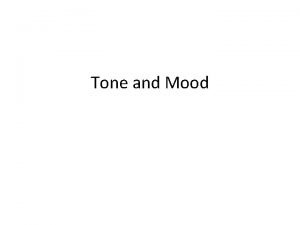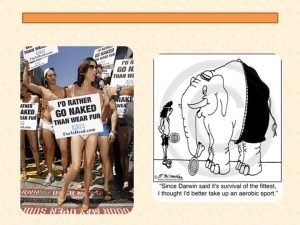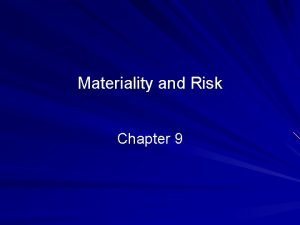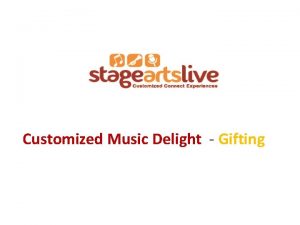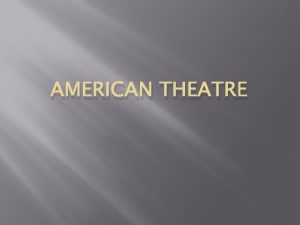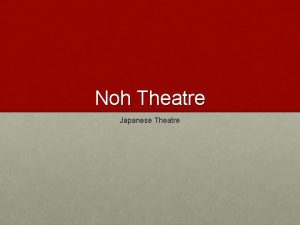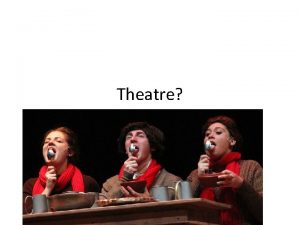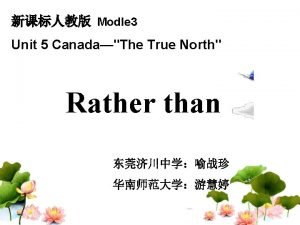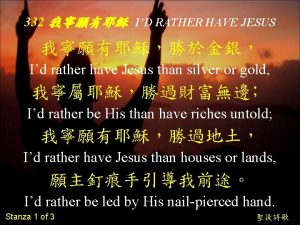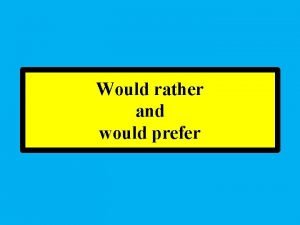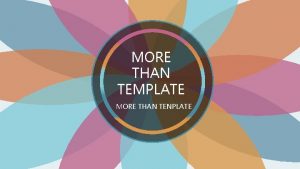Theatre A Way To Teach Rather Than Delight



















- Slides: 19

Theatre: A Way To Teach Rather Than Delight Introduction to the key ideas of Bertolt Brecht and Epic Theatre

Introducing Bertolt Brecht l l Born in 1898 in Germany Held strong political views: Pacifist and a Communist Playwright and Director Believed that theatre could present society and its faults and suggest that it is within the audience's power to alter it: Epic Theatre

What is Epic Theatre? l A style of theatre which provided a social and political commentary not for mere entertainment. “I’m not writing for the scum who want the cockles of their heart warmed. ” Brecht was concerned with examining a situation in dramatic action; looking at what happened in a story in terms of causes, effects and the nature of the action. l Audience were encouraged to NOT empathise with characters; theatrical devices were used to ‘distance’ the audience so they would focus on the social/political issue being presented. l Was a reaction against the popular realistic style of theatre, pioneered by Stanislavski. l

Brecht on Acting: Characters in Bertolt Brecht plays are ‘types of people, ’ rather than complex individuals, which society has conditioned to behave in particular way. l In a director role, Brecht asked actors to demonstrate their character rather than become their character to emphasise their social status. l The Stanislavskian actor is to work at identifying with the character he or she portrays. The Brechtian actor is to work at expressing social attitudes in clear and stylised ways. l

Gestus l Gestus is Brecht's term for an expresses ion or representation of basic human attitudes. l Not merely “gesture” but all signs of social relations, e. g. intonation of the voice and facial expression. l Attitude expressed through words or actions l Contrasts with naturalism and realism

Gestus l Example: An actor’s physical presentation of the body language of a character from a particular social class – such as the genteel manners of a group of upper class women as they stir their tea or the posture of a farmer just back from a day’s work in the fields.

PRACTICAL EXERCISES

Gestic Tableau l http: //www. youtube. com/watch? v=Gi. QG 9 ONjmx 4 l Read the Summary of the Caucasian Chalk Circle

War – the taker of lives

War – the maker of heroes

Verfremdung Effect (V-Effect) Also referred to as the ‘distancing, ’ ‘defamiliarisation, ’or ‘alienation’ effect. l Brecht wanted his audience to remember that they are watching a story (a presentation of a sequence of events) NOT reality. l As both a playwright and a director he used a variety of theatrical devices to constantly remind the audience of this fact – these devices are often referred to as V-Effects or Epic Theatre techniques. l

V-effect: Demands on the actor An actor in a Brechtian play is often required to: Play more than one character Directly address the audience Speak using the third person Sing Narrate Play a musical instrument l l l

V-effect: Staging The audience must not be hypnotised into accepting theatre as ‘real’ l l l Breaking Down the Fourth Wall Often left the house lights on or used harsh lights instead of simple naturalistic lighting. The set design was mainly simple, with only items that matter to the structure of the play or the service of the actors that appear on the stage The designs often used placards, sub-titles, projections of sketches, films, sound effects and photographs. Exaggerated/obvious use of props

Naturalism vs Epic theatre l l l l Plot Implicates the spectator in a stage situation Wears down the spectator’s capacity for action Provides the audience with sensations The spectator is involved in something Suggestion Instinctive feelings are preserved The spectator is in the thick of it, shares the experience l l l l Narrative Turns the spectator into an observer Arouses the spectator’s capacity for action Forces the audience to take decisions The spectator is made to face something Argument Brought to the point of recognition The spectator stands outside, studies

Naturalism vs Epic theatre l l The human being is taken for granted The human being is unalterable One scene makes another Growth Linear development A human being is a fixed point Thought determines being l Feeling l l l l The human being is the object of the enquiry The human being is alterable and able to alter Each scene for itself Montage Broken up A human being is a process Social being determines thought Reason

Montage Verfremdungseffekt Epic Theatre Music and Song Gestus Placards Narration Design

Montage l Similar images juxtaposed together l Intended to ‘shock’ the audience l Kept audience alert and awake l Drew attention to the content l Opposed progressive growth of plot

Music and Song l Essential in Brechtian theatre l Interrupted the text l Music and Song used separately l Commented upon character’s feelings l Used non-naturalistically

Design l Use of ‘half-curtain’ allowing backstage to be seen l Costume changes made on stage l Projections separate from action l Sharp, clear lighting l Restricted colour schemes l Placards
 Inherent rather than circumstantial
Inherent rather than circumstantial Signs signals and roadway markings
Signs signals and roadway markings El condor pasa horse
El condor pasa horse Deadly venoms help rather than hurt
Deadly venoms help rather than hurt What is logic
What is logic A grosso has a group of soloists rather than just one
A grosso has a group of soloists rather than just one Act 4 romeo and juliet summary
Act 4 romeo and juliet summary Type of retailers
Type of retailers Tracing family descent through mothers rather than fathers
Tracing family descent through mothers rather than fathers Tone and mood in literature
Tone and mood in literature I would rather eat potatoes than to eat rice yay or nay
I would rather eat potatoes than to eat rice yay or nay Meaning of dharam
Meaning of dharam My father works as ___ engineer
My father works as ___ engineer Rather than build a subgraph one edge at a time
Rather than build a subgraph one edge at a time Scope of retailing
Scope of retailing Romeo and juliet act 4 scene 1 summary
Romeo and juliet act 4 scene 1 summary Is determined a tone
Is determined a tone Green engineering principles
Green engineering principles Sentences would rather
Sentences would rather Materiality and risk
Materiality and risk


